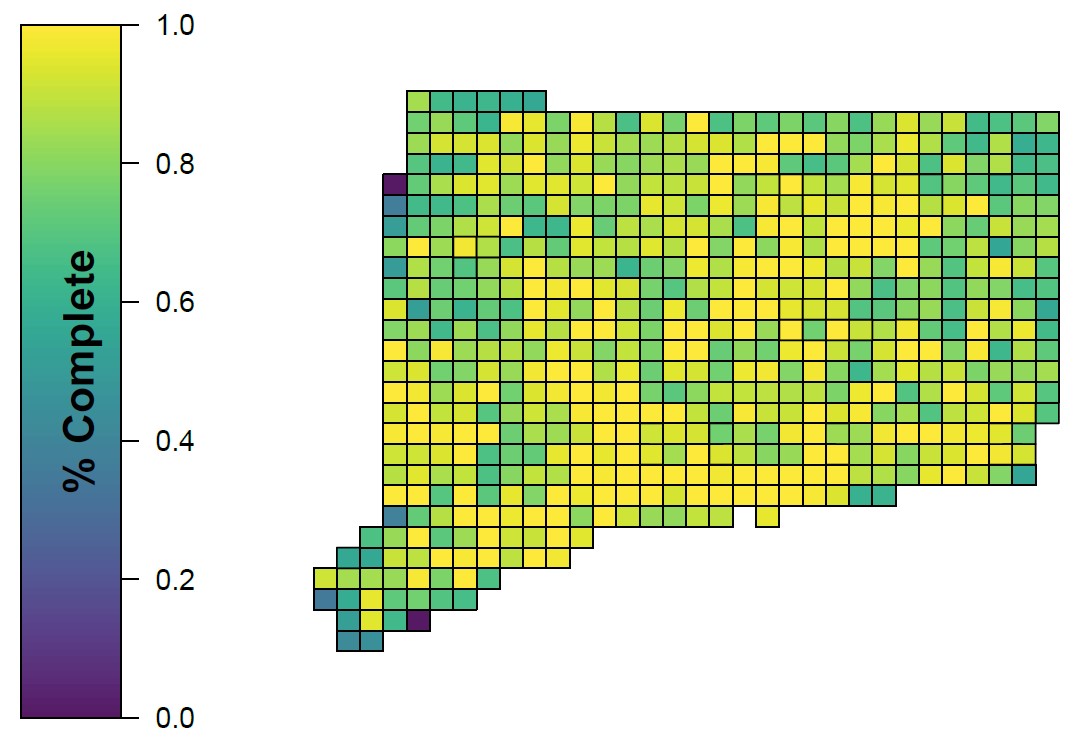In recent posts we’ve emphasized blocks with especially few hours, or especially few confirmed species, as our highest priorities for additional atlas visits. As a result, we’ve made great inroads in some of the blocks where data were most lacking. With a month or less remaining to fill gaps for most species, we thought it would also be good to revisit the “big picture” and see how things look across all blocks.
Last summer, we posted a summary of the criteria we use to assess whether a block is complete. This measure combines information on how close the block is to the 20-hour goal, how many of the species detected in the block in the 1980s have been found, and what percent of detected species have been confirmed. (For a fuller explanation revisit the earlier blog post here.)
Complete is a relative term, of course: there will always be things we miss in every block …. that’s the nature of field work. But our measure was designed to give us a sense of whether sufficient time had been spent to find the majority of the species in a block, and a sense of whether the results indicated that the additional goals of visiting diverse habitats and spreading surveys across the breeding season had been met.
By our measure, most blocks are above 60-70% complete, and many are at or very close to 100%:

Of course, we all wish the map was completely yellow, with 100% everywhere, but we are feeling pretty good about how things stand. Most of the exceptions are in predictable places: edge blocks with limited habitat variety by virtue of the reduced area within Connecticut’s borders, and places where few birders live or spend time (many of which also received less attention during the first atlas).
What does this mean for the last few weeks of summer? Of course, we don’t want anyone to stop atlasing yet! Safe dates are passing for some species, but many extend until mid-August. And, confirmed breeding codes – our highest priority – apply no matter what the date.
We also, however, don’t want people to worry if their block is not at exactly 100%. From the perspective of our data needs, any block above 90% is in very good shape – and at this point it is really only those below 80% complete that we are worried about.
So, if you have a few more days of summer atlasing in you, look for the blue-green squares on the map above, use the interactive map to determine which are least complete, and spend a few hours trying to confirm some of the remaining species.